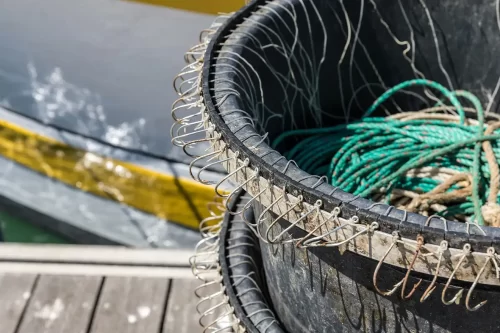To help researchers better understand how much fish is being taken from the ocean, we’re developing ways to use our data for estimating the total potential catch of the global fishing fleet. It’s a big and a complex question to answer, partly because the source of our information, AIS, is limited. It doesn’t tell us most of what we need to know. “If we cannot get the actual amount of catch from a vessel, the next best thing would be to have at least four measurements of the vessel to calculate its potential catch,” says our data and fisheries analyst Wessley Merten from Oceana. “You need vessel length, gross tonnage, vessel carrying capacity and fish hold capacity. In a perfect world, we would have all of those numbers for every fishing vessel in one place.”
But we don’t, and we thought we’d share part of our process in overcoming that challenge while we’re still working on it.
Before calculating capacity of the global fleet using our AIS data, we must first find those four measurements for all the fishing vessels we have in our database, calculate capacity for those vessels, and then extrapolate out to the purse seiners we have in our database that have lengths and gross-tonnages but do not have the other measurements. Wess is teasing out one small piece of the puzzle at a time. According to him, the best data on catch comes from the tuna sector, so he is looking specifically at tuna purse seiners. “Large-scale tuna purse seiners are responsible for more than 60 percent of the world’s tuna catch,” he says, “so right now, I’m trying to calculate the fishing capacity of large scale tuna purse seiners and the potential limit on the amount of tuna they could catch under optimal conditions.”
According to Wess, the International Seafood Sustainability Foundation (ISSF) lists 718 active tuna purse seiners. He is matching vessels on that list, which includes information on carrying capacity and fish hold capacity, with the list of tuna purse seiners we’ve identified from the 2015 AIS data and matched to the Common List of Authorized Vessels (CLAV). The idea is, if he can calculate the amount of fish that can be caught and transported by the purse seiners in our database, he can extrapolate the total capacity of all the active tuna purse seiners in the world.
So far, he has found 180 matches for which the ISSF list includes information on length, tonnage and fish hold. To increase the number of matches, he and another of our analysts, Bjorn Bergman, are cross-referencing the Maritime Mobile Service Identity (MMSI) numbers for the vessels in our database with local registries and another list called the CLAV list (Common List of Authorized Vessels).
It’s a laborious process, but with enough time and expertise, it can be done. “Vessel identities are always going to be something we’ll be working on,” Wess says. Because not only do vessels change their names and flag states, but there will always be more scientific questions to ask that the data alone can’t answer. That’s where experience and expertise come into play.
We’ll check back with Wess as our ability to capture global capacity of fishing vessels progresses. By then, we’re sure to be moving on to more analyses and even bigger questions.


